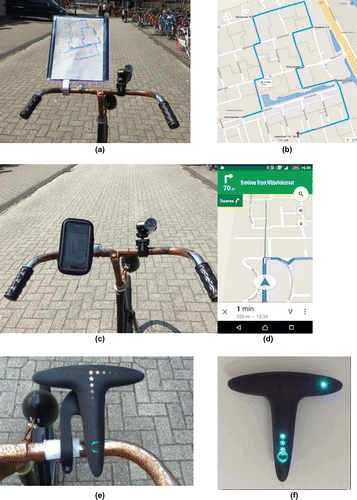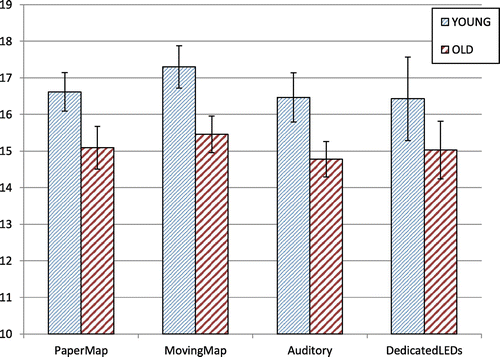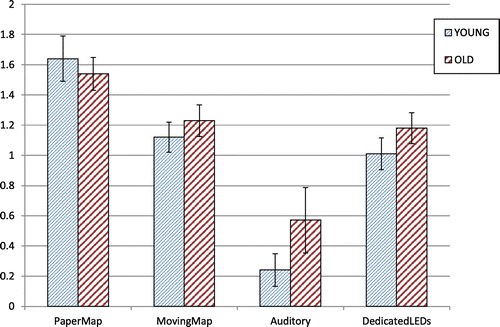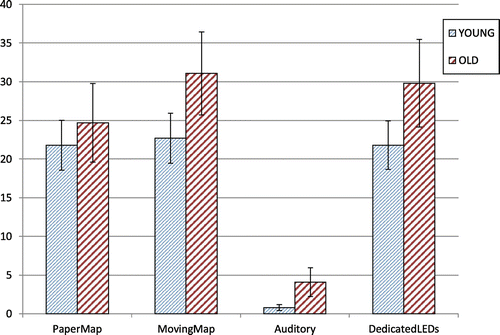Figures & data
Figure 1. Devices included in the study. (a) Paper map setup and (b) example of the route that had to be followed. (c) Moving Map (visual), (d) route guidance information as displayed. (e) Dedicated lights (Hammerhead™) indicating a right turn. (f) indicating an upcoming right turn (picture taken from https://hammerhead.helpshift.com/a/hammerhead-one/?s=light-patterns&f=what-does-each-light-pattern-mean where all patterns are shown).

Table 1. Moving Map, Dedicated lights and paper map compared with a point system (0-40) on Visual Human Factors Guidelines (based on the General Guidelines for Visual Displays, Green et al. Citation1994).
Table 2. The four conditions and type of information provided.
Table 3. Per condition and age group the average (Ave) number of mistakes and stops to look at device or map and the number of times the test leader had to intervene. SD is indicated in brackets.
Figure 2. Average Speed per condition in km/h on the 160 m selected track. Error bars reflect Standard Error.

Figure 3. Mean number of fixations at the device on the selected 160 m track. Error bars reflect SE.

Figure 4. Average duration of fixations in seconds per condition (Error bars reflect SE).

Figure 5. Percentage of time looking at the device or map.

Figure 6. Average ratings on the Rating Scale Mental Effort.

